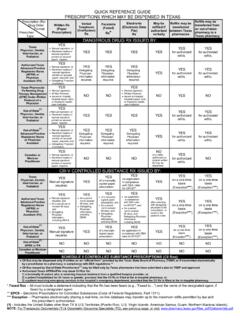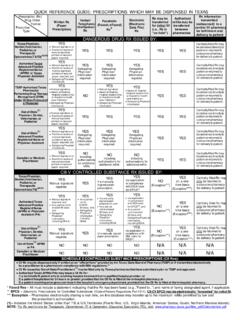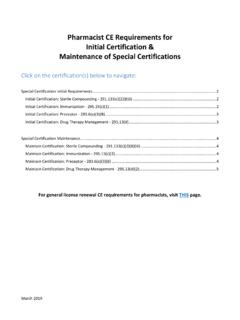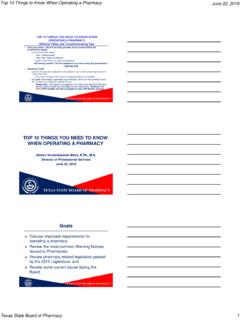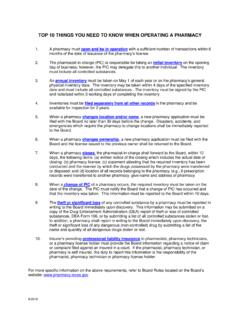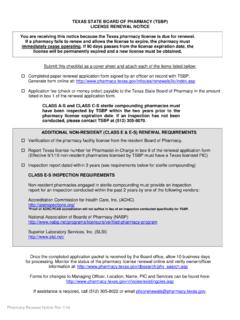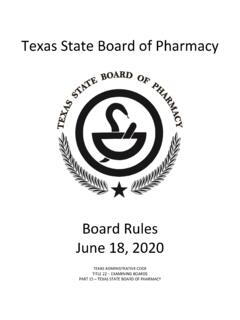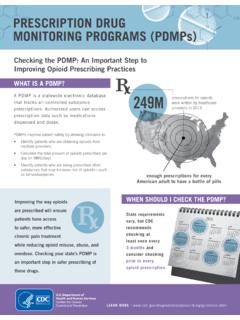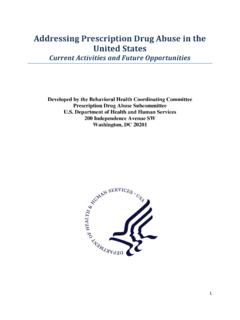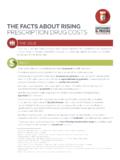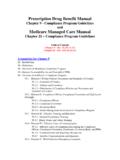Transcription of Texas Prescription Monitoring Program
1 Texas Prescription Monitoring Program The Texas Prescription Monitoring Program (PMP) collects Prescription data on ALL. Schedule II, III, IV and V controlled substances dispensed by a pharmacy in Texas or to a Texas resident from a pharmacy located in another state. The Texas Prescription Program (TPP) was created by the 67th Texas Legislature in 1981. becoming effective January 1, 1982, to monitor Schedule II controlled substance prescriptions. Effective September 1, 2008, the Texas Legislature expanded the TPP to include the Monitoring of Schedule III through V controlled substance prescriptions.
2 Beginning September 1, 2016, the PMP transfers from the Texas Department of Public Safety to the Texas State Board of Pharmacy. Although controlled substances have valid medical uses, they also have potential for abuse and addiction. Diversion of Prescription drugs is a significant abuse problem, and this Program was created to be an efficient, cost effective tool for investing and preventing drug diversion. Federal controls monitor the substances from manufacture through distribution to retail facilities. The Program seeks to educate and control misuse by following controlled substances to the ultimate user.
3 The PMP may be used by practitioners and pharmacists to verify their own records and inquire about patients. In addition, the Program may be used to generate and disseminate information regarding Prescription trends. Pharmacies that dispense Schedule II, III, IV, and V are required to report the information directly to the Texas State Board of Pharmacy's contracted vendor, APPRISS. Prescription data is reported by the prescriber's Federal DEA number. Prescribers and pharmacies are required by statute to have a current Federal DEA registration in order to possess, administer, prescribe or dispense controlled substances.
4 Effective September 1, 2017, Texas -licensed pharmacies are required to report all dispensed controlled substances records to the Texas PMP no later than the next business day after the Prescription is completely filled. Pharmacies, who fail to report, are subject to an administrative, civil, or criminal penalty. Access to the Prescription data is statutorily restricted. The information is available to practitioners and pharmacies who are inquiring about their own prescribing or dispensing history on their patients. State regulatory boards have access as well. A person who knowingly gives, permits or obtains unauthorized access to this information, is subject to criminal penalty.
5 Regulations regarding Controlled Substances are found in the Texas Health and Safety Code, Chapter 481; Texas Administrative Code, Title 22, Part 15, Chapter 315; and the Code of Federal Regulations, Chapter 21, Part 1300. REV. 9/17

